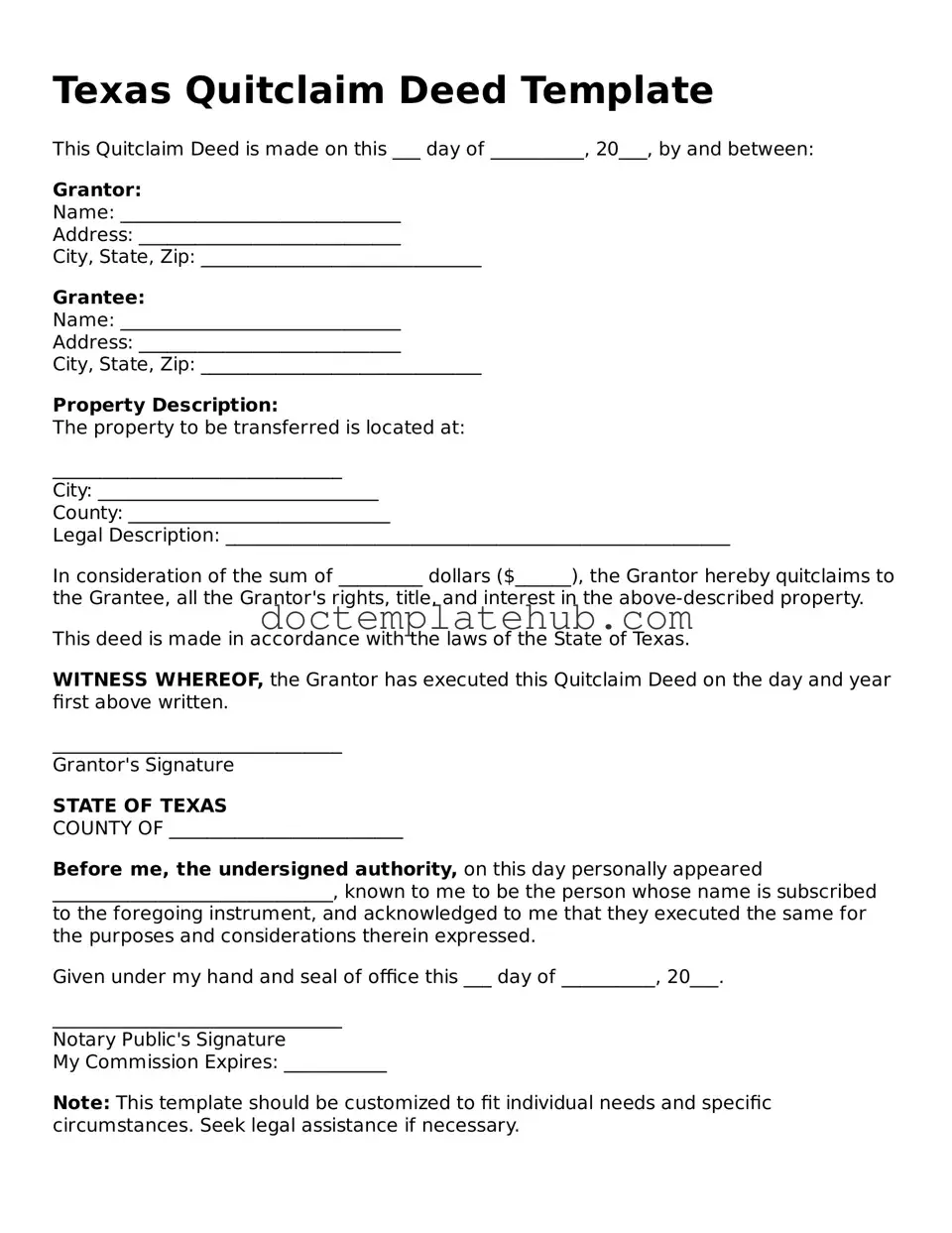What is a Texas Quitclaim Deed?
A Texas Quitclaim Deed is a legal document used to transfer ownership of real property from one party to another without making any guarantees about the title. This means the person transferring the property (the grantor) does not assure the recipient (the grantee) that they hold clear title. It is often used in situations where the parties know each other, such as family transfers or divorces, and want to simplify the transfer process.
When should I use a Quitclaim Deed in Texas?
You might consider using a Quitclaim Deed in several situations. For instance, if you are transferring property to a family member, such as a child or spouse, a Quitclaim Deed can facilitate that process without the need for extensive legal proceedings. Additionally, if you are resolving a dispute over property ownership or clarifying title issues among co-owners, this deed can serve as a useful tool. However, it is essential to be aware that this type of deed does not provide any warranty or guarantee regarding the property’s title.
How do I complete a Texas Quitclaim Deed?
Completing a Texas Quitclaim Deed involves several steps. First, you will need to gather the necessary information, including the names of the grantor and grantee, the legal description of the property, and any relevant details about the transaction. Next, fill out the form accurately, ensuring all information is correct. After signing the deed, it must be notarized. Finally, you should file the Quitclaim Deed with the county clerk’s office in the county where the property is located to make the transfer official.
Are there any fees associated with filing a Quitclaim Deed in Texas?
Yes, there are typically fees associated with filing a Quitclaim Deed in Texas. These fees can vary by county, so it is advisable to check with the local county clerk’s office for specific amounts. In addition to filing fees, consider any potential costs related to notarization or obtaining a copy of the deed. Understanding these costs ahead of time can help you prepare for the process more effectively.
